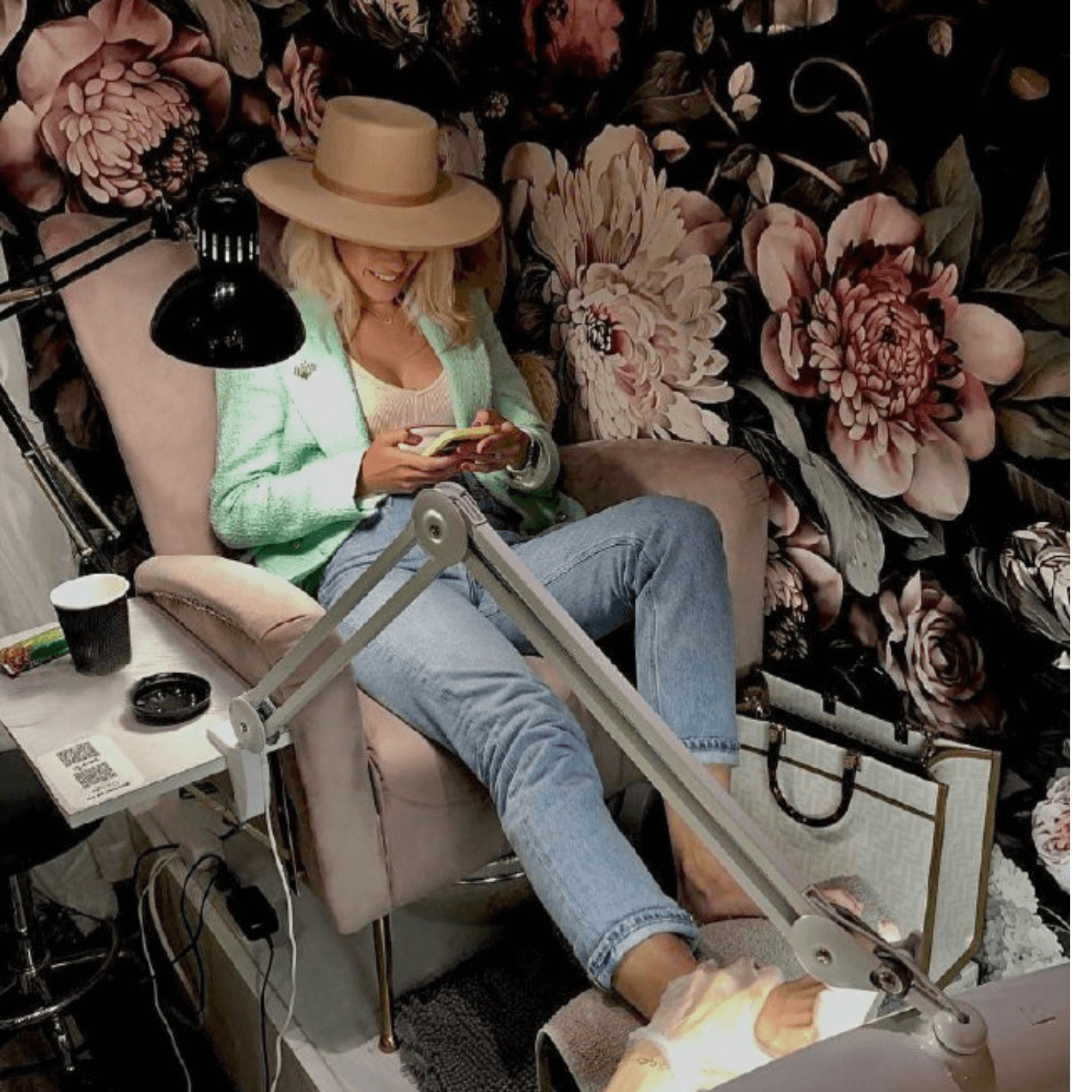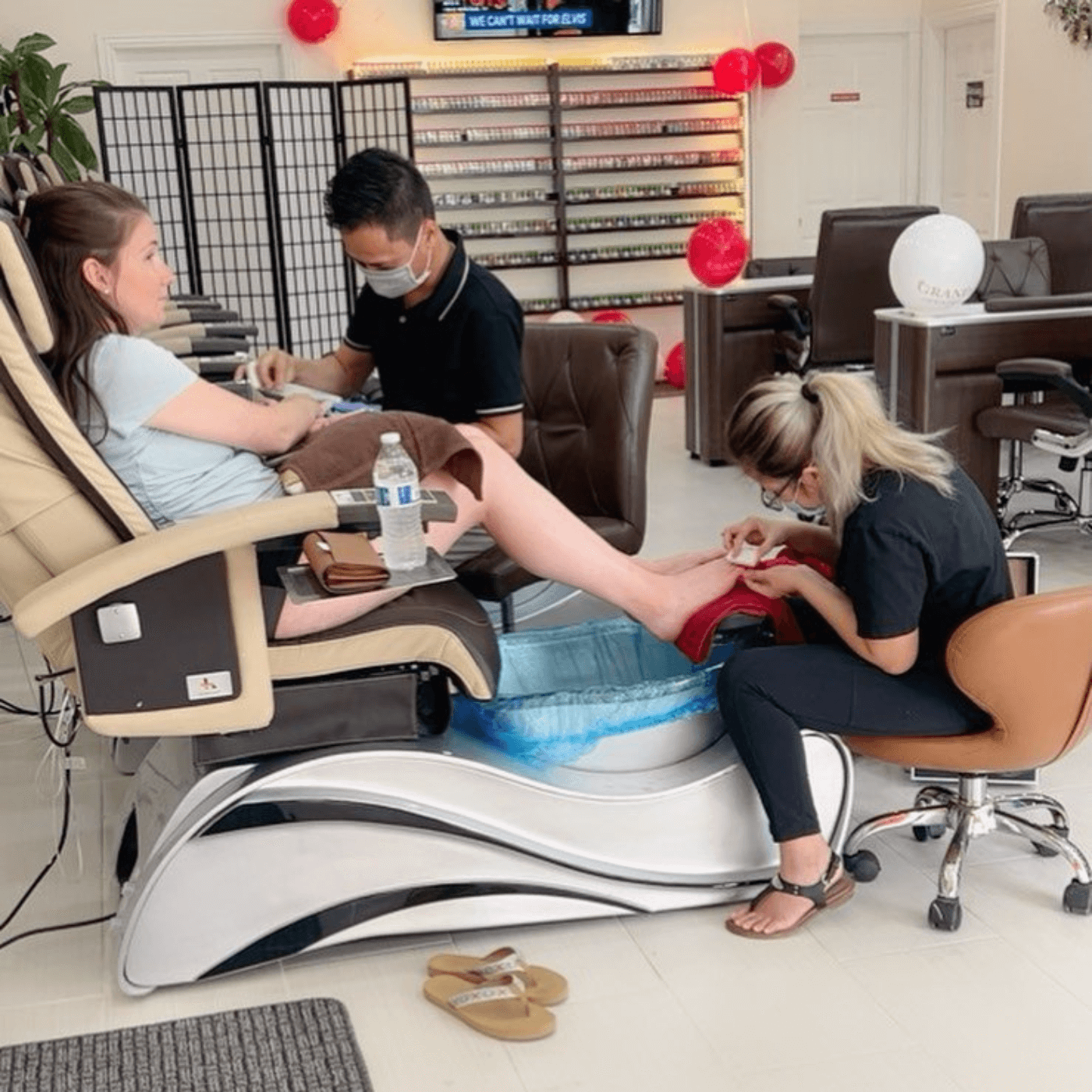Risks of Pedicure: What You Need to Know Before Your Appointment
Posted on Oct 2, 2024
Getting a pedicure can come with some risks, even though it feels like the perfect self-care treat—relaxing in a cozy chair while your toes get pampered. However, if the salon doesn’t follow proper hygiene practices or your nail artist rushes the job, those risks of a pedicure can become a concern. Before your next appointment, let’s go over the potential risks and how you can avoid them.
From infections to skin irritation, being aware of the risks allows you to enjoy your pedicure safely and confidently. Below, we’ve broken down what you should look out for, how to protect yourself, and the best ways to ensure your experience is both safe and relaxing.
Jump to the Section You Like
Risk of Infection

Belliata Glo Nail Bar
View on Instagram
One of the biggest risks of a pedicure is infection, especially if the tools aren’t properly sanitized between clients. Nail artists should be using sterilized equipment or disposable tools for each client. When this step is skipped, there’s a high risk of introducing bacteria or even viruses to your skin, which can lead to infections. This is particularly concerning if the skin is cut or damaged during the pedicure process.
Tip: Always check that your nail artist is using clean, sterilized tools. Don’t hesitate to ask about their hygiene practices if you’re unsure.
Nail and Skin Damage

Belliata Nufeet Medical Pedicures
View on Instagram
Aggressive filing or buffing, especially if done by someone who isn’t experienced, can lead to nail damage. Over-buffing can thin the nails, making them weak and prone to breaking. Cutting cuticles too deeply or improperly can also cause painful infections or injuries.
Nail artist expertise matters when it comes to the health of your nails and skin. Be cautious if you notice any rough handling during the process—it’s always okay to ask them to take a gentler approach.
Fungal Infections

Belliata Medi Pedi NYC
View on Instagram
Unfortunately, fungal infections are a real concern when it comes to pedicures, especially in salons where footbaths or foot files aren’t cleaned properly. Fungi can thrive in warm, damp environments, and if the tools used on your feet have been used on someone with a fungal infection, you risk getting one too. It’s not just your toenails at risk—your skin can also be affected by fungal infections.
Tip: Make sure your nail artist sanitizes footbaths and other tools before your session, or consider bringing your own tools to minimize the risk.
Chemical Reactions and Allergies

Belliata Nufeet Medical Pedicures
View on Instagram
With all the nail polish, removers, and lotions used during a pedicure, there’s a chance that you could have a chemical reaction or allergic response to one of the products. Some polishes or creams contain ingredients that can cause skin irritation, redness, or even an allergic rash.
It’s important to know if you have sensitive skin or allergies to certain chemicals, especially if you’re trying a new product. If you’re unsure, let your nail artist know about any concerns before they start applying products to your skin or nails.
Foot Soaks and Health Concerns

Belliata Trinity Nail Spa
View on Instagram
Foot soaks are often a relaxing part of a pedicure, but they come with their own set of risks. If the footbath isn’t cleaned properly between clients, it can harbor bacteria and fungi, leading to infections like athlete’s foot or even more serious bacterial infections.
Also, if you have any open cuts, wounds, or blisters on your feet, soaking them in a shared footbath could expose you to infection. Always be cautious if you have a compromised immune system, diabetes, or any other health conditions that make you more prone to infections.
How to Minimize the Risks of a Bad Padicure
While the risks of a pedicure are real, there are ways to minimize them and still enjoy your pampering session. Here are a few tips to ensure you have a safe experience:
- Choose a reputable salon: Read reviews and ask around for recommendations to find a nail salon that prioritizes cleanliness and hygiene.
- Bring your own tools: If you’re concerned about hygiene, consider bringing your own sanitized nail clippers, files, and buffers.
- Avoid shaving before your appointment: Shaving can create tiny cuts that increase the risk of infection. Try to avoid shaving your legs at least 24 hours before your pedicure.
- Check for proper sanitation: Make sure the salon is cleaning its tools and footbaths between clients. If something seems off, it’s better to walk away than to risk your health.
- Speak up: If you notice anything unsanitary or if your nail artist is being too rough, don’t hesitate to speak up. Your safety comes first!
Recommendations
Pedicures can be a wonderful part of your beauty routine, but staying aware of the risks of a pedicure is key to keeping your feet healthy and happy. Always choose a reputable salon, ask about their hygiene practices, and don’t be afraid to speak up if something doesn’t feel right. With these precautions in mind, you can safely enjoy all the benefits of a pedicure while minimizing any potential risks.
Citations
Nail anatomy
https://www.sciencedirect.com/science/
Finger nail plate shape and size for personal identification – a possible low technology method for the developing world - Preliminary report
https://www.ajol.info/index.php/ajhs/article/view/30795
Physics of nail conditions: why do ingrown nails always happen in the big toes?
https://iopscience.iop.org/article/

Tabio
Tabio is a writer with a focus on podiatry and foot care. Their passion lies in translating complex medical knowledge into clear, accessible articles. Tabio's expertise covers everything from at-home foot care routines to the latest advancements in podiatric treatments. When not writing, Tabio stays on top of healthy living trends, ensuring their readers receive well-rounded advice for maintaining overall foot health and well-being.

